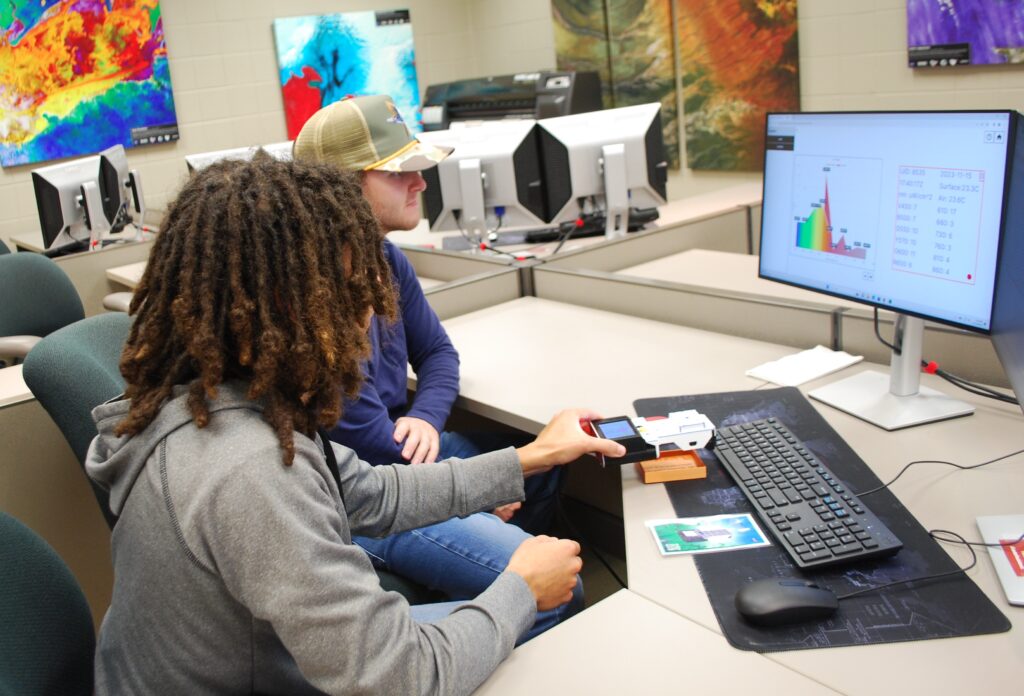STELLA hand-held spectrometers can be used for a variety of educational and outreach purposes. Through a unique hands-on experience, the STELLA project introduces students and the general public to foundational remote sensing and engineering concepts.
STELLA for Outreach
STELLA spectrometers help engage the public with the applications and benefits of NASA’s Earth-observing missions. Beyond stunning imagery acquired by satellites like Landsat, scientists can use graphs of multispectral data, called spectral signatures, to study the Earth’s surface. Spectral signatures can reveal basic information about a land cover such as color, but can also provide more specific information such as distinguishing plant and tree types.
Combining data from observations of visible and infrared light can provide a valuable tool for applications that benefit society such as calculating crop yields or identifying algal blooms. As a hand-held analog to Earth-observing instruments, STELLA can measure the amount of red and near-infrared light reflecting off a plant. The ratio between a leaf’s absorption of the red light and reflectance of near-infrared light can inform whether a plant is healthy or stressed.
The modular nature of STELLA’s open-source design allows for modification to fit outreach demonstrations for other Earth-observing missions.
+ Spectroscopic Mystery: Decoding Materials with the STELLA Spectrometer

STELLA for Education
STELLA introduces students to remote sensing concepts through instrument development and data collection. By building their own spectrometers, students explore engineering processes, apply programming skills, and learn the importance of instrument calibration. Using STELLA to collect data teaches the importance of controlling variables to minimize uncertainty in measurements and fosters analytical thinking and a deeper understanding of the complexities behind collecting NASA satellite data.
Students can graph data from STELLA to answer science questions. Multispectral measurements provide information about the properties and conditions of the objects being observed. For example, not only can the greenness of a leaf be quantified, but the health of the plant can be assessed by measuring the photosynthetic activity in the leaves.

Additionally, because STELLA is low-cost and modular, it can be used as a starting point for curriculum development that leverages the engineering design process in multiple STEM fields and activity types.
+ NIR Plant Stress Test: Investigating the Impact of Light and Water on Plants
+ Solar Eclipse Activity: Comparing Measurements During Changing Light Levels

